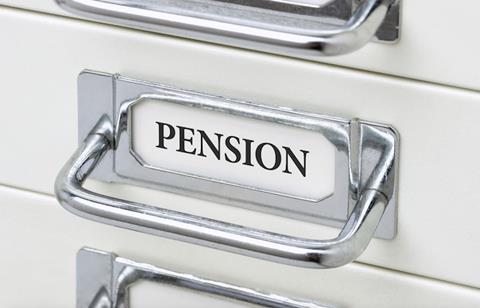
Defined contribution (DC) pension schemes at private sector organisations had 7.7 million active members in 2017, compared with 6.4 million active members in 2016 and 1 million active members in 2012, according to research by the Office for National Statistics (ONS).
Its Occupational pension schemes survey: UK, 2017 also found that, within private sector DC schemes, the average total contribution rate was 3.4% in 2017, falling from 4.2% in 2016. This consisted of a 1.2% contribution from pension members and a 2.1% contribution from employers.
Paul Waters, head of guided outcomes at Hymans Robertson, said: “As the figures show, while the overall amount being saved into DC pensions increased in 2017 the average total contribution rate was 3.4%, falling from 4.2% in 2016. Even with the increase in contributions levels to 5% in April, and a further increase to 8% in 2019, people will be massively under-saving.
“The reduction of the [auto-enrolment] starting age to 18 and changing the entry threshold to base contributions which are due to be implemented, will help. These moves alone, however, will not achieve enough and other measures, such as pushing out the target retirement date to coincide with their state pension age and further increasing contributions to a total of 12%, will be needed to achieve an adequate income in retirement. At 12% we would begin to see a contribution that will have a meaningful impact for employees’ retirement savings. At that level we can see far greater certainty of them reaching a target income that they can live on in retirement.
“Employers, the industry and government must focus on helping people to save enough for retirement and not presume that the [auto-enrolment] default rates mean everything is going to be rosy when they finish working. Collectively we have the tools, we need to use them.”
The research further found that the total membership of occupational pension schemes in the UK was an estimated 41.1 million in 2017; this is the highest level recorded by this survey to date, and compares to 39.2 million total occupational pension members in 2016 and 27.9 million workplace pension members in 2013.
Occupational pension schemes had 15.1 million active members in 2017, split between 8.8 million members working in the private sector and 6.3 million within the public sector. This is an overall increase from 2016, which has 13.5 million active employee members across all occupational pension schemes. By comparison, active membership of defined benefit (DB) pension schemes within the private sector fell from 1.3 million in 2016 to 1.1 million in 2017.
Kate Smith, head of pensions at Aegon, said: “The headline figures today about the increased number of people saving into pensions gloss over some very concerning issues in workplace pensions. We cannot dispute that it’s positive to see the total membership of occupational pension schemes in the UK continue to climb, reaching more than 41 million in 2017, the highest level recorded by the survey. However, the overall figures fail to capture the group personal pensions (GPPs) so there is a significant piece of the picture missing.”
The total number of preserved pension entitlements increased from 15.4 million in 2016 to 15.8 million in 2017. This was primarily seen in the private sector, which saw a rise from 11.2 million to 11.6 million between 2016 and 2017, compared to the public sector, which had increases from 4.2 million preserved pension entitlements in 2016 to 4.3 million in 2017.
Smith added: “[This] only amplifies the critical need for the pension dashboard to be delivered as soon as possible. The changing nature of the workplace means people quickly end up with multiple smaller pots, which can make it a real challenge to manage. If those with a workplace pension are to stand a chance of meeting their retirement goals, it’s essential that they are fully aware of where their various pots are invested.”
Public sector pension schemes had a total membership of 15.5 million in 2017, an improvement on the recorded 14.8 million members in 2016.
Nathan Long, senior analyst at Hargreaves Lansdown, said: “The growth in pension savers shows auto-enrolment has been spectacular at changing the financial future of the nation. Attention should now shift to helping everyone gain the confidence to take control of their own retirement if they want to.
“The amount people are paying in needs to rise, but will automatically go up to 8% of earnings when rules change in April next year. Hargreaves Lansdown have found half of people can already be helped to voluntarily increase their contributions, so the challenge is to improve on this as savings continue to grow.
“The number of dormant pension pots is increasing with all the speed of a runaway train. Giving people the opportunity to pay into their choice of pension when they join a new employer would help put the brakes on before the problem threatens to de-rail the auto-enrolment project.”











